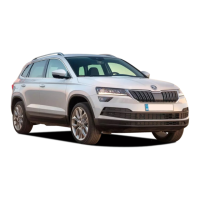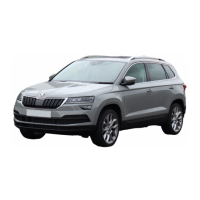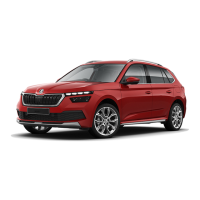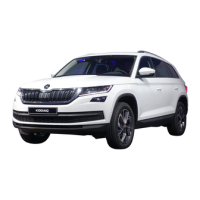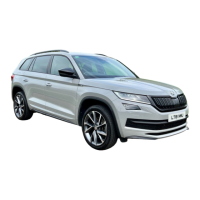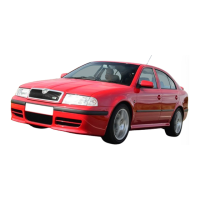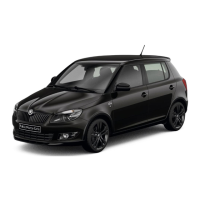Brakes and Parking
Įvadas į temą
The wear of the brake pads is dependent on the operating conditions and dri-
ving style. Under difficult conditions (e.g. urban, sporty driving style) the condi-
tion of the brakes should also be checked by a specialist garage between the
service intervals.
The performance of the brakes can be delayed if the brakes are damp, iced up
in winter or if covered in a layer of salt. The brakes are cleaned and dried by
applying the brakes several times » .
Corrosion on the brake discs and dirt on the brake pads occur if the vehicle
has been parked for a long period and if you do not make much use of the bra-
king system. The brakes are cleaned by applying the brakes several times » .
Before travelling a long distance with a steep gradient, reduce speed and
shift into the next lowest gear. As a result, the braking effect of the engine will
be used, reducing the load on the brakes. If you do have to brake, this should
be carried out at intervals.
Emergency braking display - when an emergency braking is performed, the
automatic flashing of the brake lights are used to alert the traffic behind.
New brake pads must first be „worn in“ because these do not initially have the
best possible braking effect. Drive especially carefully for the first 200 km or
so.
A too low brake fluid level can cause faults in the braking system, the war-
ning light illuminates in the instrument cluster» puslapis 42, Braking sys-
tem. If the warning light does not illuminate and an extended stopping distance
is required, then driving should be adapted according to the unknown cause of
fault and restricted braking effect - seek the assistance of a specialist garage
immediately.
The brake booster increases the pressure generated with the brake pedal. The
brake booster only operates when the engine is running.
DĖMESIO
■
Greater physical effort is required for braking when the engine is swit-
ched off – risk of accident!
■
During the braking procedure on a vehicle with manual transmission,
when the vehicle is in gear and at low revs, press the clutch pedal. Otherwi-
se, the functionality of the brake system may be impaired – risk of accident!
■
Do not press the brake pedal if braking is now required. This causes the
brakes to overheat and can also result in a longer braking distance and ex-
cessive wear - risk of accident!
■
Braking for the purpose of drying and cleaning the brake discs should be
carried out only if the traffic conditions permit. Do not place any other road
users in jeopardy.
■
Recommendations for new brake pads have to be observed.
■
When stopping and parking, the parking brake should always be on, ot-
herwise the vehicle could move off - there is the risk of an accident!
■
If a front spoiler, full wheel trim, etc. is mounted retrospectively, it must
be ensured that the air supply to the front wheel brakes is not reduced. Ot-
herwise, the functionality of the brake system may be impaired – risk of ac-
cident!
Electric parking brake
pav. 247
Parking brake button
206
Driving

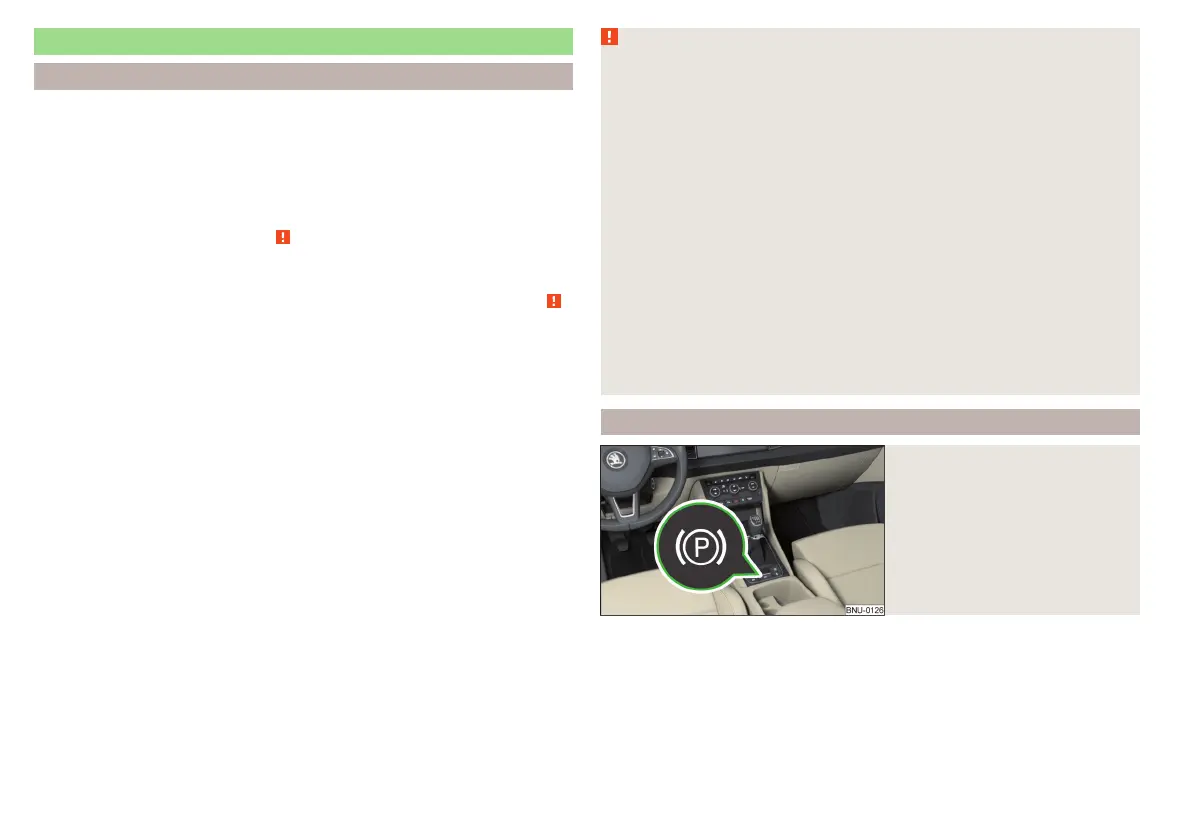